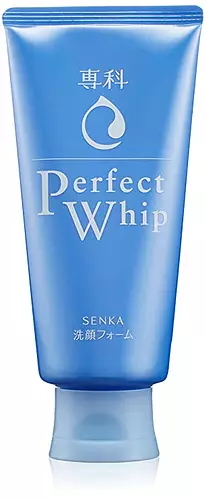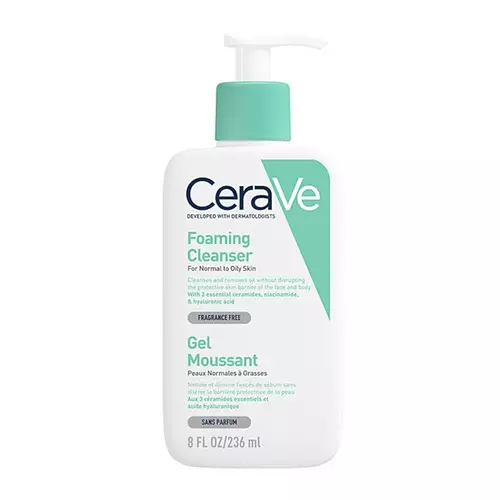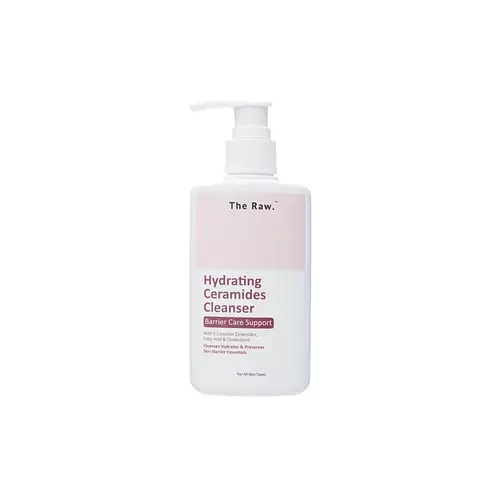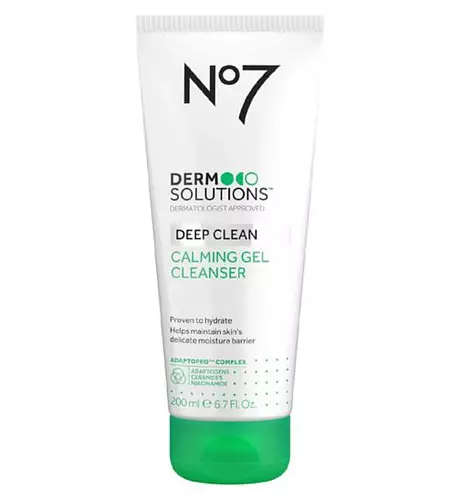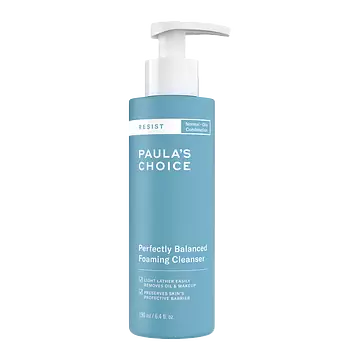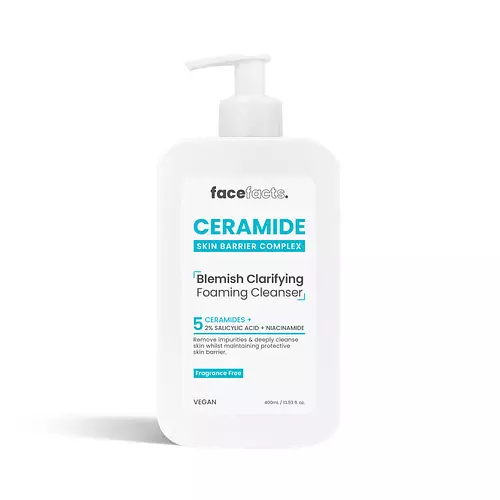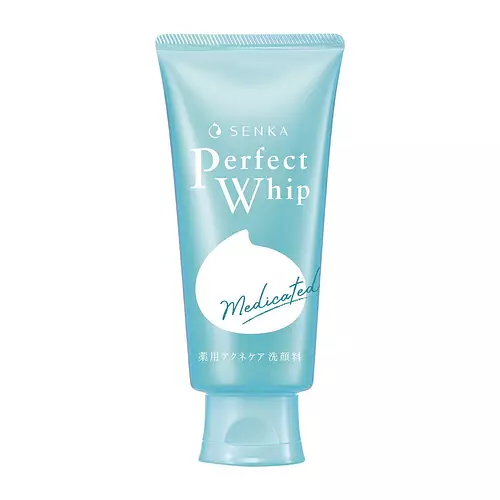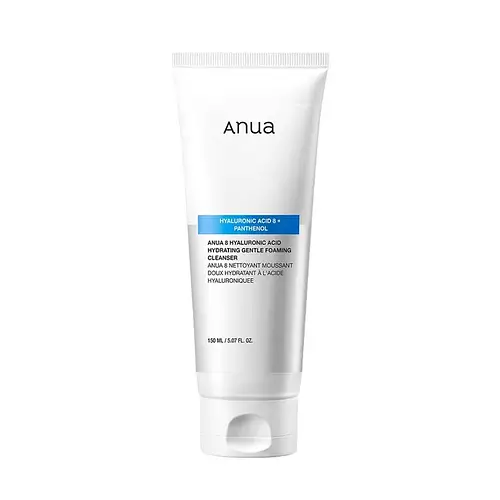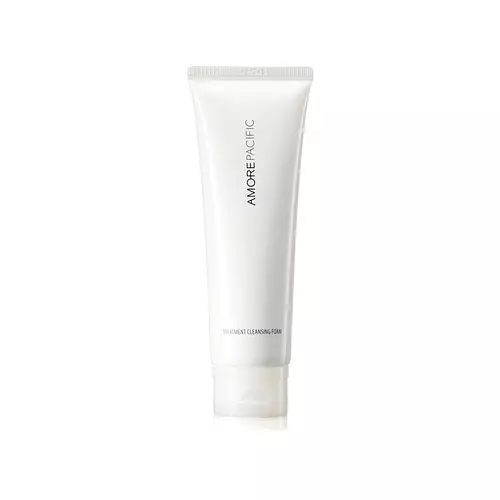Shiseido Senka Perfect Whip Cleansing Cream Versus CeraVe Foaming Cleanser
Updated on May 31, 2024
Overview
What they are
These products are both reef safe face cleansers. They have a total of 6 ingredients in common
Cool Features
They both contain hyaluronic acid
Suited For
They're both likely to be good for dry skin and brightening skin
Free From
They both do not contain any common allergens, oils, parabens, silicones or sulfates
We independently verify ingredients, and our claims are backed by peer-reviewed research. Spot a product that needs an update? Let us know.
Ingredient Info
Shiseido Senka Perfect Whip Cleansing Cream 21 ingredients
CeraVe Foaming Cleanser 25 ingredients
At a glance
Click on any of the items below to learn more
Shiseido Senka Perfect Whip Cleansing Cream 21 ingredients
CeraVe Foaming Cleanser 25 ingredients
Benefits
This product contains 1 ingredient that may have this attribute:
This product contains 1 ingredient that may have this attribute:
Concerns
This product contains 1 ingredient that may have this attribute:
This product contains 3 ingredients that may have this attribute:
This product contains 2 ingredients that may have this attribute:
This product contains 1 ingredient that may have this attribute:
Notable Ingredients
This product contains 1 ingredient that may have this attribute:
This product contains 3 ingredients that may have this attribute:
This product contains 1 ingredient that may have this attribute:
Benefits
This product contains 5 ingredients that may have this attribute:
This product contains 1 ingredient that may have this attribute:
This product contains 5 ingredients that may have this attribute:
This product contains 3 ingredients that may have this attribute:
This product contains 1 ingredient that may have this attribute:
This product contains 3 ingredients that may have this attribute:
This product contains 1 ingredient that may have this attribute:
This product contains 1 ingredient that may have this attribute:
This product contains 2 ingredients that may have this attribute:
Concerns
This product contains 1 ingredient that may have this attribute:
This product contains 1 ingredient that may have this attribute:
This product contains 1 ingredient that may have this attribute:
Ingredients Side-by-side
Ingredients Explained
These ingredients are found in both products.
Ingredients higher up in an ingredient list are typically present in a larger amount.
Water. It's the most common cosmetic ingredient of all. You'll usually see it at the top of ingredient lists, meaning that it makes up the largest part of the product.
So why is it so popular? Water most often acts as a solvent - this means that it helps dissolve other ingredients into the formulation.
You'll also recognize water as that liquid we all need to stay alive. If you see this, drink a glass of water. Stay hydrated!
Learn more about WaterGlycerin is already naturally found in your skin. It helps moisturize and protect your skin.
A study from 2016 found glycerin to be more effective as a humectant than AHAs and hyaluronic acid.
As a humectant, it helps the skin stay hydrated by pulling moisture to your skin. The low molecular weight of glycerin allows it to pull moisture into the deeper layers of your skin.
Hydrated skin improves your skin barrier; Your skin barrier helps protect against irritants and bacteria.
Glycerin has also been found to have antimicrobial and antiviral properties. Due to these properties, glycerin is often used in wound and burn treatments.
In cosmetics, glycerin is usually derived from plants such as soybean or palm. However, it can also be sourced from animals, such as tallow or animal fat.
This ingredient is organic, colorless, odorless, and non-toxic.
Glycerin is the name for this ingredient in American English. British English uses Glycerol/Glycerine.
Learn more about GlycerinDisodium EDTA plays a role in making products more stable by aiding other preservatives.
It is a chelating agent, meaning it neutralizes metal ions that may be found in a product.
Disodium EDTA is a salt of edetic acid and is found to be safe in cosmetic ingredients.
Learn more about Disodium EDTASodium Benzoate is a preservative. It's used in both cosmetic and food products to inhibit the growth of mold and bacteria. It is typically produced synthetically.
Both the US FDA and EU Health Committee have approved the use of sodium benzoate. In the US, levels of 0.1% (of the total product) are allowed.
Sodium benzoate works as a preservative by inhibiting the growth of bacteria inside of cells. It prevents the cell from fermenting a type of sugar using an enzyme called phosphofructokinase.
Sodium Benzoate is the salt of benzoic acid. Foods containing sodium benzoate include soda, salad dressings, condiments, fruit juices, wines, and snack foods.
Studies for using ascorbic acid and sodium benzoate in cosmetics are lacking, especially in skincare routines with multiple steps.
We always recommend speaking with a professional, such as a dermatologist, if you have any concerns.
Learn more about Sodium BenzoateSodium Hyaluronate is hyaluronic acid's salt form. It is commonly derived from the sodium salt of hyaluronic acid.
Like hyaluronic acid, it is great at holding water and acts as a humectant. This makes it a great skin hydrating ingredient.
Sodium Hyaluronate is naturally occurring in our bodies and is mostly found in eye fluid and joints.
These are some other common types of Hyaluronic Acid:
Learn more about Sodium HyaluronateCitric Acid is an AHA derived from citrus fruits (think oranges, lemons, and limes!).
As an AHA, Citric Acid removes the top layer of skin cells from the newer layer of skin underneath. This helps skin to remove dark spots and even out skin tone.
If you spot Citric Acid near the end of an ingredient list, it's likely there as a pH adjuster rather than an active ingredient.
Read more about some other popular AHA's here:
Learn more about Citric AcidIngredient Ratings
Here's what our community thinks of the ingredients in these products.
When to use
Shiseido Senka Perfect Whip Cleansing Cream 21 ingredients
CeraVe Foaming Cleanser 25 ingredients


Reviews
Here's what our community thinks
Shiseido Senka Perfect Whip Cleansing Cream 21 ingredients
AinatashaHasyimBoon_568
Not too bad
I use this after oil cleansing as second cleanser. It is okay to my skin, other brand does break me out. But this one are quite good...
Not too bad
I use this after oil cleansing as second cleanser. It is okay to my skin, other brand does break me out. But this one are quite good despite dry a little bit
peoplemover
only used for a couple weeks - I don't think it broke me out, but made my skin feel pretty tight and dry.. would sometimes sting
CeraVe Foaming Cleanser 25 ingredients
Laila
It was the first western cleanser that i ever used and definitely the last.
Hated how no matter how much i scrub my face it doesn’t feel clean at...
It was the first western cleanser that i ever used and definitely the last.
Hated how no matter how much i scrub my face it doesn’t feel clean at all, plus it dried my face like hell.
Never buying anything from this brand❌
Bianca1
It’s bot the worst cleanser there is, but it’s bad enough. it doesnt even deserve these two starts. instead of helping me with my fungal acne, it’s...
It’s bot the worst cleanser there is, but it’s bad enough. it doesnt even deserve these two starts. instead of helping me with my fungal acne, it’s causing more. i have oily skin and this cleanser dries my skin SO bad. i tried once not to use mosturizer to see if the dry feeling is from the cleanser and it was; my whole face hurt and it was very red and sensitive. i don t recommend this cleanser at all! the hype over cerave is not it. it’s very overrated imo.
